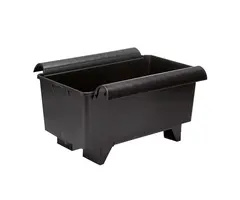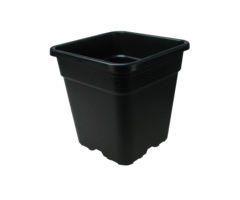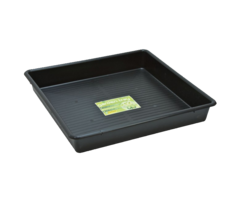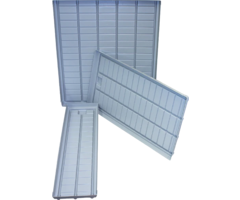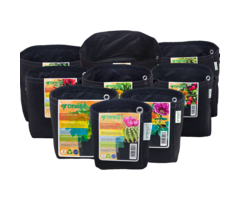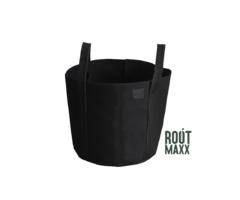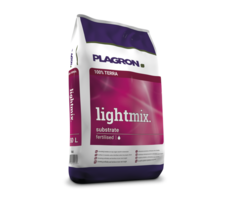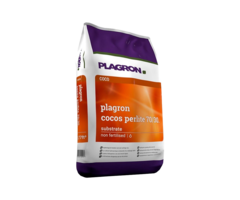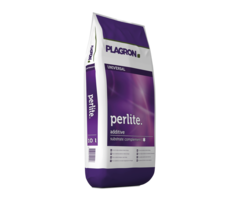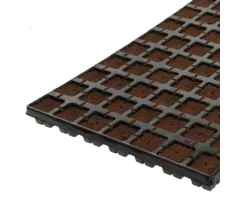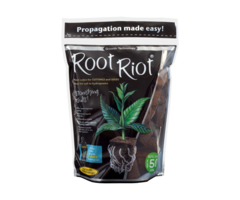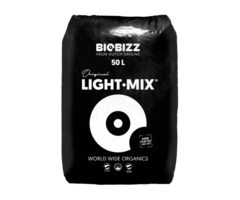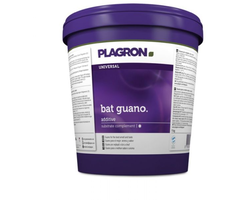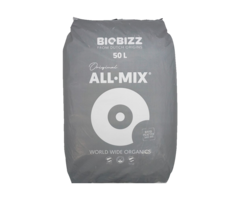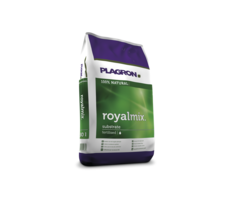Pots, Planting Trays and Substrate
Pots, Planting Trays and Substrate
For your cultivation to run smoothly, you obviously need pots and substrate to grow in. You can also do this in Planting trays.
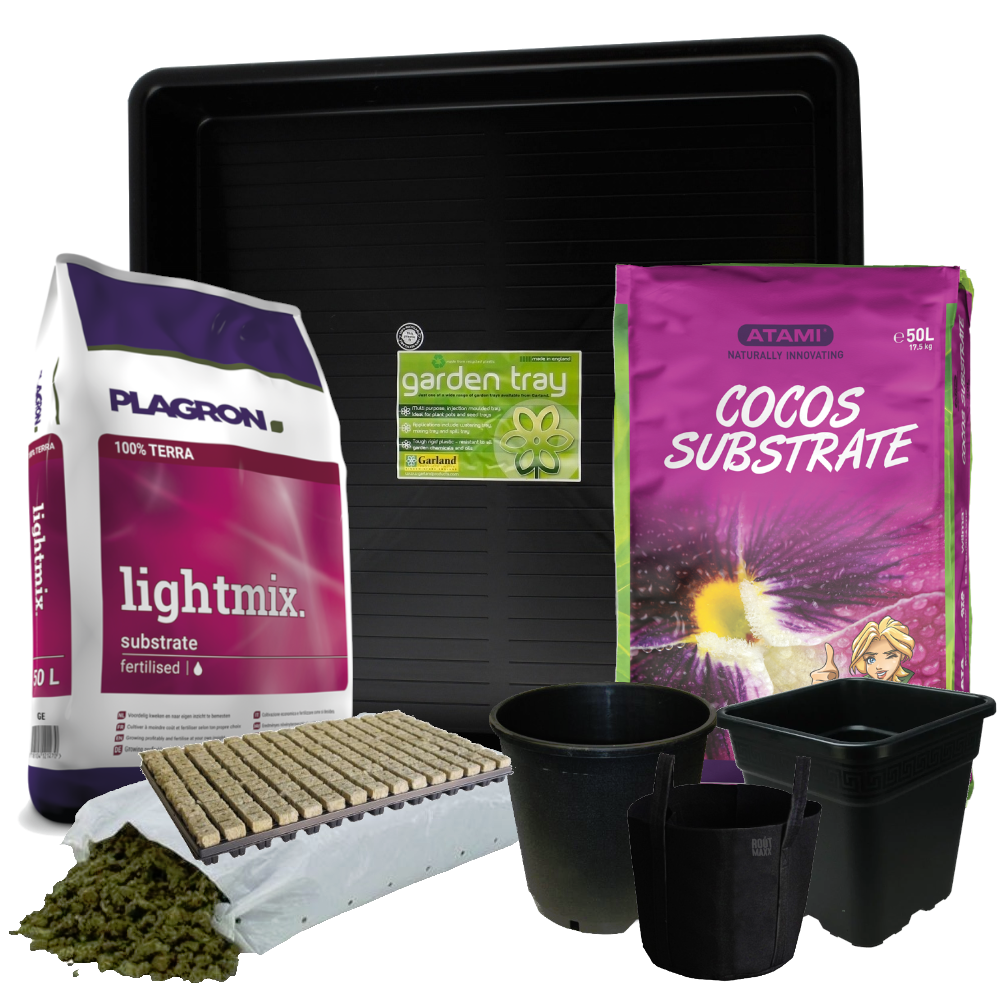
Pots
There are many different pots on the market. When buying them, it is always advisable to check what they are made of. This is because not every pot in the local garden center has the right ingredients. It could be that the pots are made of certain plastic that your crop cannot withstand or that at certain temperatures the pots release plasticizers. This means that they cannot withstand the heat and release certain fumes that are harmful to humans, animals and your plants! These pots are available in many different shapes and sizes.
- Plastic pots square
- Plastic pots round
- Fabric pots
- Airpots
To explain all of these a little more broadly
Plastic pots both round and square are actually the most common pots. This is because they are the cheapest, easy to keep clean and because these are often the easiest to calculate away per M2. So you have these in all sorts of different shapes and sizes. We carry on our website the square ones from 0.25L to 25L. The round ones are available from 7L to 25L.
Fabric pots are becoming more and more common. The advantage of fabric pots is that they are very airy. They hold water well and give your root system the optimal oxygen level, so your plant will develop itself better. After all, a beautiful plant starts with a good root system.
Airpots are actually most commonly used in outdoor cultivation. These pots have holes all around which means that they also have a very airy root system with lots of oxygen. Because of the holes, these pots can dry out quickly, ideal for when your plant has been standing in the rain one time and is overwatered. The airpots are also easy to store. This is because the bottoms are loose and stackable and the side of the pot is a mat that can be unfolded, and with multiple pots can therefore be effectively stacked away. These are attached by means of a screw.
Planting trays
These planting trays are often used for ease of cultivation, if you need to water larger areas or if you use an ebb and flow system. Here too there are many differences and like the pots, the material of the tray should be checked before use. Planting trays can also be used when you want to keep your growing space tidy. You can then place the plants in the bottoms so that when watering, there is minimal mess in the tent itself. In fact, bases are very easy to clean after a round of growing. There are different types of planting trays:
- Danish bottoms
- Garland ebb and flow trays
- Pond liners*
Danish bottoms are most commonly used in hydroponics. Pots or slabs can be laid out on these soils. By means of drippers or ebb and flow the plants can be watered automatically and you will have minimal worries. However, it is always important to clean the planting trays thoroughly and check the water systems for blockages.
Garland ebb and flow planting trays are most commonly used in ebb and flow systems. By placing several pots in the planters, you can use a bucket or water pump to fill your tank with water. This is usually submerged for a few hours, until all plants have absorbed the water. Always make sure your subfloor is level. If the water flows too much in one direction, plants will not have equal water absorption and plants will stagnate or die as a result.
Pond liner is a separate variant. Because not every growing space is the same size, planting trays are therefore not available on all growing spaces. By laying pond liner on the floor, it is possible to create your own planting trays. You can create one large tray or several trays for different types of crops. This is also easy to clean after use and again, the same applies! Beware of plasticizers!
Substrate
Soil
Coco
Hydro substrate
Soil improvers
Cuttings plugs
Pots, Planting Trays and Substrate
For your cultivation to run smoothly, you obviously need pots and substrate to grow in. You can also do this in Planting trays.

Pots
There are many different pots on the market. When buying them, it is always advisable to check what they are made of. This is because not every pot in the local garden center has the right ingredients. It could be that the pots are made of certain plastic that your crop cannot withstand or that at certain temperatures the pots release plasticizers. This means that they cannot withstand the heat and release certain fumes that are harmful to humans, animals and your plants! These pots are available in many different shapes and sizes.
- Plastic pots square
- Plastic pots round
- Fabric pots
- Airpots
To explain all of these a little more broadly
Plastic pots both round and square are actually the most common pots. This is because they are the cheapest, easy to keep clean and because these are often the easiest to calculate away per M2. So you have these in all sorts of different shapes and sizes. We carry on our website the square ones from 0.25L to 25L. The round ones are available from 7L to 25L.
Fabric pots are becoming more and more common. The advantage of fabric pots is that they are very airy. They hold water well and give your root system the optimal oxygen level, so your plant will develop itself better. After all, a beautiful plant starts with a good root system.
Airpots are actually most commonly used in outdoor cultivation. These pots have holes all around which means that they also have a very airy root system with lots of oxygen. Because of the holes, these pots can dry out quickly, ideal for when your plant has been standing in the rain one time and is overwatered. The airpots are also easy to store. This is because the bottoms are loose and stackable and the side of the pot is a mat that can be unfolded, and with multiple pots can therefore be effectively stacked away. These are attached by means of a screw.
Planting trays
These planting trays are often used for ease of cultivation, if you need to water larger areas or if you use an ebb and flow system. Here too there are many differences and like the pots, the material of the tray should be checked before use. Planting trays can also be used when you want to keep your growing space tidy. You can then place the plants in the bottoms so that when watering, there is minimal mess in the tent itself. In fact, bases are very easy to clean after a round of growing. There are different types of planting trays:
- Danish bottoms
- Garland ebb and flow trays
- Pond liners*
Danish bottoms are most commonly used in hydroponics. Pots or slabs can be laid out on these soils. By means of drippers or ebb and flow the plants can be watered automatically and you will have minimal worries. However, it is always important to clean the planting trays thoroughly and check the water systems for blockages.
Garland ebb and flow planting trays are most commonly used in ebb and flow systems. By placing several pots in the planters, you can use a bucket or water pump to fill your tank with water. This is usually submerged for a few hours, until all plants have absorbed the water. Always make sure your subfloor is level. If the water flows too much in one direction, plants will not have equal water absorption and plants will stagnate or die as a result.
Pond liner is a separate variant. Because not every growing space is the same size, planting trays are therefore not available on all growing spaces. By laying pond liner on the floor, it is possible to create your own planting trays. You can create one large tray or several trays for different types of crops. This is also easy to clean after use and again, the same applies! Beware of plasticizers!
Substrate
Soil
Coco
Hydro substrate
Soil improvers
Cuttings plugs
Available: 1ltr | 2ltr | 4ltr | 8ltr...
- ø22x26cm(7ltr)
- ø29x23(10ltr)
- ø30.5x26.5cm(15ltr)
- ø38x25cm(20ltr)
- ø40x27cm(25ltr)...
Available liters:
- 3....
Available in: 1.5L | 4L | 7L | 11L | 15L | 20L | 30L | 50L....
Available in: 141x141mm | 174x174mm | 251x251mm | 291x291mm....
Available in: 40x40x40mm | 75x75...
Available in: 1...
Because of the space setup the young crop has all the space it needs to develop.
Available: ...
Available...
Available in: 50 liters....
Pots, Planting Trays and Substrate
For your cultivation to run smoothly, you obviously need pots and substrate to grow in. You can also do this in Planting trays.

Pots
There are many different pots on the market. When buying them, it is always advisable to check what they are made of. This is because not every pot in the local garden center has the right ingredients. It could be that the pots are made of certain plastic that your crop cannot withstand or that at certain temperatures the pots release plasticizers. This means that they cannot withstand the heat and release certain fumes that are harmful to humans, animals and your plants! These pots are available in many different shapes and sizes.
- Plastic pots square
- Plastic pots round
- Fabric pots
- Airpots
To explain all of these a little more broadly
Plastic pots both round and square are actually the most common pots. This is because they are the cheapest, easy to keep clean and because these are often the easiest to calculate away per M2. So you have these in all sorts of different shapes and sizes. We carry on our website the square ones from 0.25L to 25L. The round ones are available from 7L to 25L.
Fabric pots are becoming more and more common. The advantage of fabric pots is that they are very airy. They hold water well and give your root system the optimal oxygen level, so your plant will develop itself better. After all, a beautiful plant starts with a good root system.
Airpots are actually most commonly used in outdoor cultivation. These pots have holes all around which means that they also have a very airy root system with lots of oxygen. Because of the holes, these pots can dry out quickly, ideal for when your plant has been standing in the rain one time and is overwatered. The airpots are also easy to store. This is because the bottoms are loose and stackable and the side of the pot is a mat that can be unfolded, and with multiple pots can therefore be effectively stacked away. These are attached by means of a screw.
Planting trays
These planting trays are often used for ease of cultivation, if you need to water larger areas or if you use an ebb and flow system. Here too there are many differences and like the pots, the material of the tray should be checked before use. Planting trays can also be used when you want to keep your growing space tidy. You can then place the plants in the bottoms so that when watering, there is minimal mess in the tent itself. In fact, bases are very easy to clean after a round of growing. There are different types of planting trays:
- Danish bottoms
- Garland ebb and flow trays
- Pond liners*
Danish bottoms are most commonly used in hydroponics. Pots or slabs can be laid out on these soils. By means of drippers or ebb and flow the plants can be watered automatically and you will have minimal worries. However, it is always important to clean the planting trays thoroughly and check the water systems for blockages.
Garland ebb and flow planting trays are most commonly used in ebb and flow systems. By placing several pots in the planters, you can use a bucket or water pump to fill your tank with water. This is usually submerged for a few hours, until all plants have absorbed the water. Always make sure your subfloor is level. If the water flows too much in one direction, plants will not have equal water absorption and plants will stagnate or die as a result.
Pond liner is a separate variant. Because not every growing space is the same size, planting trays are therefore not available on all growing spaces. By laying pond liner on the floor, it is possible to create your own planting trays. You can create one large tray or several trays for different types of crops. This is also easy to clean after use and again, the same applies! Beware of plasticizers!

